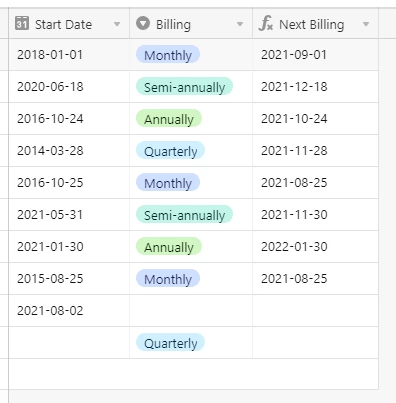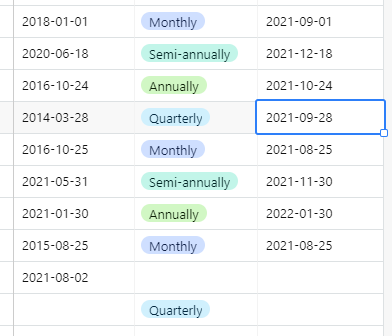I have three fields like this:
| Start Date | Billing | Next Billing |
In the Start Date field, there’s a past date
In the Billing field, there’s a dropdown list with the values “Monthly”, “Quarterly”, “Semi-annually” and “Annually”
In the Next Billing field, I want a formula that calculates next billing date based on the values in the two previous fields. Next Billing should always be a upcoming date (or today).
Examples:
If Start Date is “2018-01-01” and Billing is “Monthly”, I want Next Billing to say “2021-09-01”
If Start Date is “2020-06-18” and Billing is “Semi-annually”, I want Next Billing to say “2021-12-18”
If Start Date is “2016-10-24” and Billing is “Annually”, I want Next Billing to say “2021-10-24”
I have tried to do this myself but I can’t work out how to do it. Can someone please help?
Thanks!





